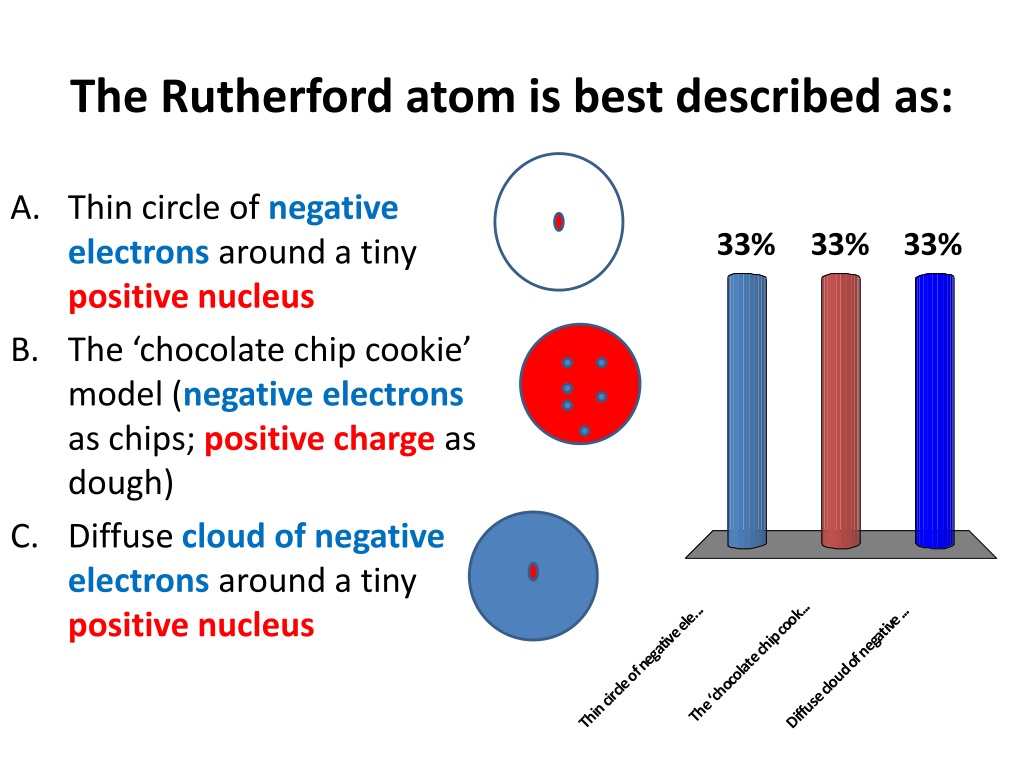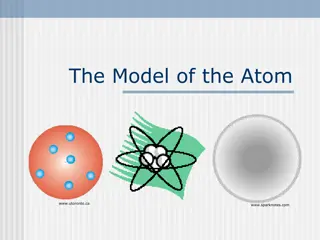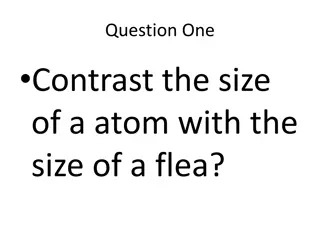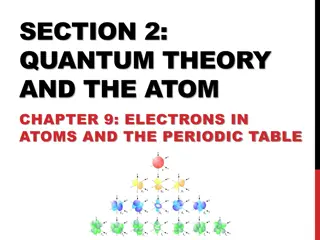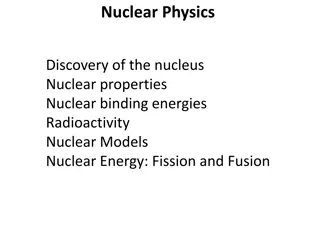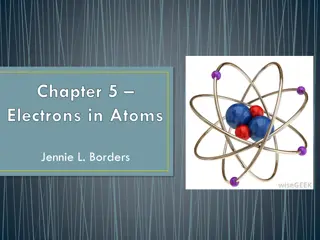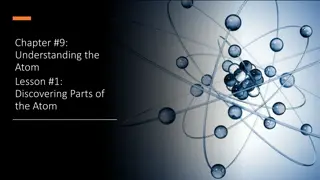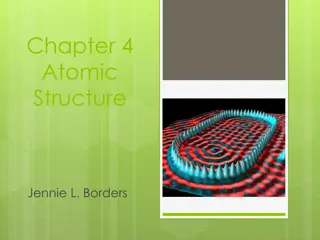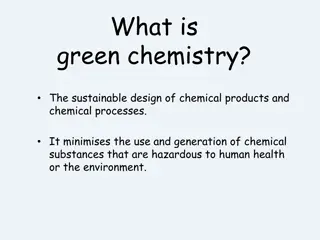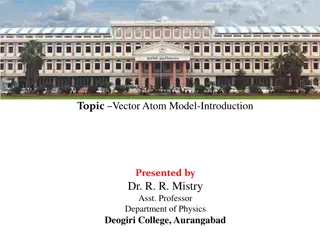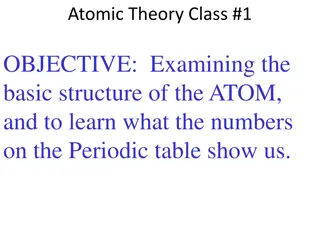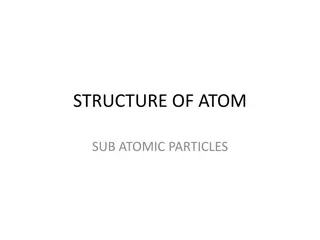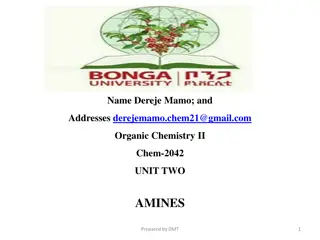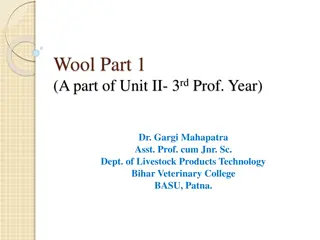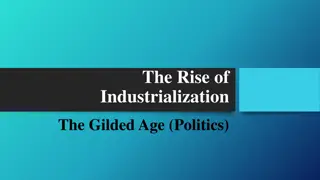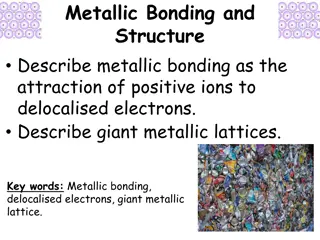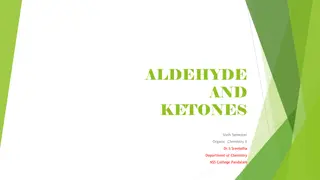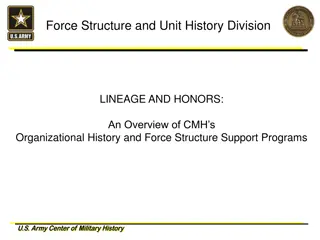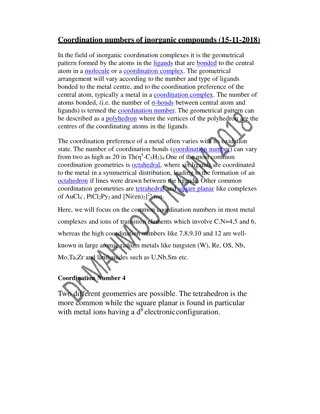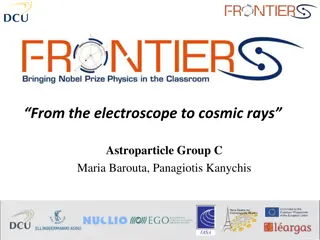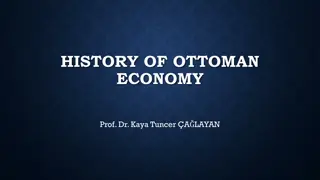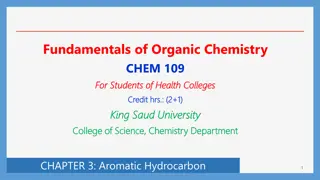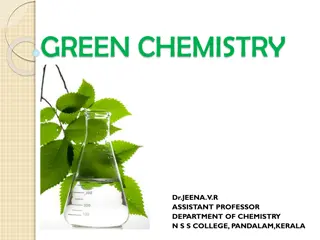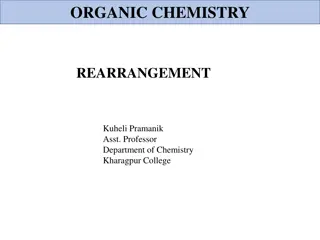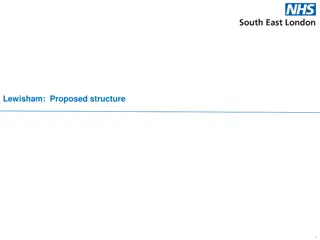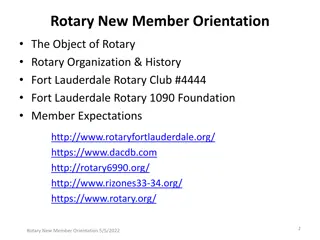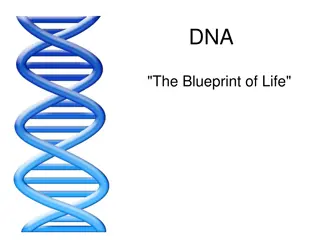The Rutherford Atom and Its Structure
The Rutherford atom is characterized by a thin circle of negative electrons surrounding a tiny positive nucleus. In this model, the electrons are in a diffuse cloud around the nucleus, forming the majority of the atomic volume but only a small fraction of the mass. Protons define an element's atomic number, with the nucleus containing the majority of the atomic mass. Understanding atoms involves grasping their neutral state, proton count significance in defining elements, isotopes, and the use of mass spectrometry for element analysis.
Download Presentation

Please find below an Image/Link to download the presentation.
The content on the website is provided AS IS for your information and personal use only. It may not be sold, licensed, or shared on other websites without obtaining consent from the author. Download presentation by click this link. If you encounter any issues during the download, it is possible that the publisher has removed the file from their server.
E N D
Presentation Transcript
The Rutherford atom is best described as: A. Thin circle of negative electrons around a tiny positive nucleus B. The chocolate chip cookie model (negative electrons as chips; positive charge as dough) C. Diffuse cloud of negative electrons around a tiny positive nucleus 33% 33% 33% The chocolate chip cook... Thin circle of negative ele... Diffuse cloud of negative ...
Some Details of Rutherfords Atom ~ 10-10 m Diffuse electron Cloud out here ~10-15 m Nucleus is + charged Electrons are - charged Nucleus at center (magnified here ~10,000X)
Rutherfords Atom by the numbers Diameter of electron cloud = 100,000 Diameter of nucleus 1 Atomic part Relative mass % mass of atom Nucleus 1 Electrons 0.005 0.5 99.5 Atomic part Relative volume Nucleus 0.00000000000001 Electrons 1 electron cloud is 99.99999999% of atomic volume but only 0.5% of the mass
Chemical metaphor 4: nuclear vs. electron mass Atomic part Relative mass % mass of atom Nucleus mass/electron mass =1/0.005 =2000 if electron mass ( 3 g=0.0066 lb) =>Nuclear mass ? 2000*0.0066 lb=13.2 lb
Some more details and language about atoms 1) In a neutral atom: positive charge sum = proton count=#p+ = negative charge sum =electron count=#e- #p+ = #e- Implies the electron `cloud is more like a rapidly moving ball of negative charged gnats flying around in an equal number of tiny positive charged lead balls
2) The proton count is the same as the Periodic Table s Atomic # => proton count defines the element Atomic # =#p+
How many protons in an Aluminum atom ? A. 26 B. 26.982 C. 27-13=14 D. varies 25% 25% 25% 25% 26 26.982 varies 27-13=14
3) Elements come in several `flavors= isotopes =# p+ Aston s Mass Spectrometer ?????? Francis William Aston Cambridge University UK Nobel Prize in Chemistry 1922 What Aston sees in his mass spectrometer when he puts in pure Ne Mass/p 20.0 22.0
22.0 20.0 Mass/p Something else besides protons is in nucleus, but it has no charge. Dubbed a neutron =no. The neutron weighs the same as a proton (Mass/p=whole #) You can have different numbers of no in a given element. (A specific # of no = a specific isotope) =# p+ What Aston s result teach .
How many electrons (e), protons (p) and neutrons (n) in the Ne isotope circled below? 25% 25% 25% 25% A. 10 e 20 p 20 n B. 10 e 12 p 10 n C. 10 e 10 p 22 n D. 10 e 10 p 12 n 10 e 10 p 12 n 10 e 10 p 22 n 10 e 20 p 20 n 10 e 12 p 10 n 20.0 22.0 22.0 Mass/p
Symbolic for isotopes (see p. 54) Mass Number=Z 22 Ne 10 neutron count= n =Z-p Atomic Number=p Can also be written: 22-Ne
Aston experiments explains the mysterious 20.18 22.0 20.0 Mass/p % of total signal 91 Average Neon mass= Atomic #=#p+ 9 91*20.0 + 9*22.0 100 =20.18 ??? AVERAGE ATOMIC MASS
Given the data below, what is the average atomic mass of Cl ? A. (35+37)/2 B. (35*25 +37*75)/100 C. (35*75+37*25) D. (35*75+37*25)/100 25% 25% 25% 25% Mass # % Isotope 35-Cl 37-Cl (35+37)/2 (35*75+37*25) (35*75+37*25)/100 (35*25 +37*75)/100 35 37 75 25
THINKING LIKE A CHEMIST: THINKING LIKE A CHEMIST: Russian style Dimitri Dimitri Mendeleev Mendeleev Russian style ~1865 ~1865 At St Petersburg U Chemistry the dedicated chemistry teacher
Out of school Cardplayer known party animal political troublemaker confirmed `tippler
The mess he deals with ~ 60 elements by 1865 # element some properties 1 H completely reactive; not found except as H2 gas at room temperature. Found in numerous organic and inorganic compounds 2 He completely unreactive. Gas at room temperature. No known compounds of He. 3 Li very reactive. Solid metal at room temperature. Found many inorganic compounds No apparent rhyme or reason as element count goes up .
